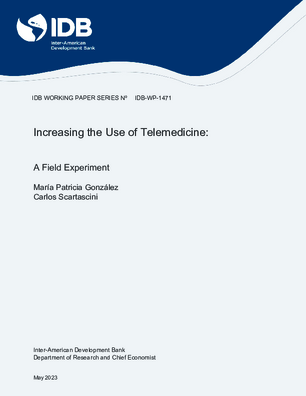Increasing the Use of Telemedicine: A Field Experiment
Date issued
May 2023
Subject
Behavioral Economics;
Economy;
Telemedicine;
Mobile App;
Health Care;
Health;
Rating
JEL code
I11 - Analysis of Health Care Markets;
I13 - Health Insurance, Public and Private;
D83 - Search • Learning • Information and Knowledge • Communication • Belief • Unawareness;
C93 - Field Experiments
Country
Argentina
Category
Working Papers
Patients are reluctant to use telemedicine health services. Telemedicine is an “experience good,” one that can be accurately evaluated and compared to its substitute (in this case, in-person visits) only after the product has been adopted and experienced. As such, an intervention that increases the probability of a first experience can have lasting effects. This article reports the results of a randomized field experiment conducted in collaboration with a health insurance company in Argentina. During the intervention, about two thousand households with no previous experience with telemedicine received periodic e-mails with information about the available services. It effectively increased the take-up and demand for telemedicine. Within the first eight months of the experiment, patients assigned to the treatment group were 6pp more likely to have used the service at least once (12pp higher for those who opened at least one e-mail.) This first use led to large cumulative effects over time. After eight months, the number of virtual consultations by the treatment group was six times larger than those of the control group. These results provide additional evidence about how information interventions can increase technological take-up within the health sector and add to the understanding of how behavioral barriers affect patients resistance to technological adoption.
Generative AI enabled




